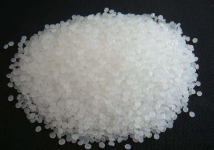read: 1014 time:2025-07-09 15:34:38 from:化易天下
Leishman’s stain is a widely used Romanowsky-type dye, crucial in the field of hematology for staining blood smears to differentiate and identify various types of blood cells. The effectiveness of this stain hinges on the quality of its components, particularly the methyl alcohol used as a solvent. A common question in this context is: "Why should methyl alcohol in Leishman’s stain be acetone free?" This article delves into the reasons why acetone-free methyl alcohol is essential for the optimal performance of Leishman's stain.
The purity of methyl alcohol, or methanol, is critical when used in Leishman's stain because it acts as both a solvent and a fixative. Methanol ensures that the stain penetrates the cells effectively, preserving their morphology and enabling accurate microscopic examination. If the methyl alcohol contains impurities like acetone, it can interfere with the staining process. Acetone, being a powerful solvent with different chemical properties than methanol, can cause the stain to behave unpredictably, leading to suboptimal or inconsistent results.
When acetone is present in methyl alcohol used for Leishman's stain, it can lead to several staining issues. Acetone is known to be more aggressive in dehydrating cells, which can cause excessive shrinkage or morphological alterations. These changes can make it difficult to differentiate between cell types accurately. Additionally, acetone can affect the solubility of the stain components, resulting in uneven staining or poor contrast between different cellular elements. This can significantly reduce the diagnostic utility of the stained smear, making it harder to identify and count specific cell types or detect abnormalities.
Another reason why methyl alcohol in Leishman’s stain should be acetone free is its potential to cause precipitation of the dye. Acetone can induce premature precipitation of eosin and azure B, the key dyes in Leishman’s stain. This precipitation can result in visible artifacts on the slide, which can be mistaken for cellular components, leading to false-positive results. Moreover, these precipitates can clog the staining solution, reducing its shelf life and requiring more frequent replacements, which increases the cost and maintenance of the staining process.
In summary, the methyl alcohol in Leishman’s stain must be acetone free to ensure high-quality staining. Acetone contamination can lead to significant issues such as altered cell morphology, inconsistent staining, and the formation of dye precipitates. These factors compromise the accuracy and reliability of diagnostic results, making it crucial for laboratories to use acetone-free methanol to maintain the integrity of Leishman's stain. By ensuring the purity of methyl alcohol, hematologists can achieve precise and reliable staining outcomes, which are vital for accurate diagnosis and patient care.

Jincheng Petrochemical's 300000 ton polypropylene plant successfully trial production, 2024 polypropylene market analysis

The ABS market remains sluggish, what is the future direction?

Market differentiation of bisphenol A intensifies: prices rise in East China, while prices generally decline in other regions

The production method and process flow of silicone acrylic lotion, and what are the common raw materials